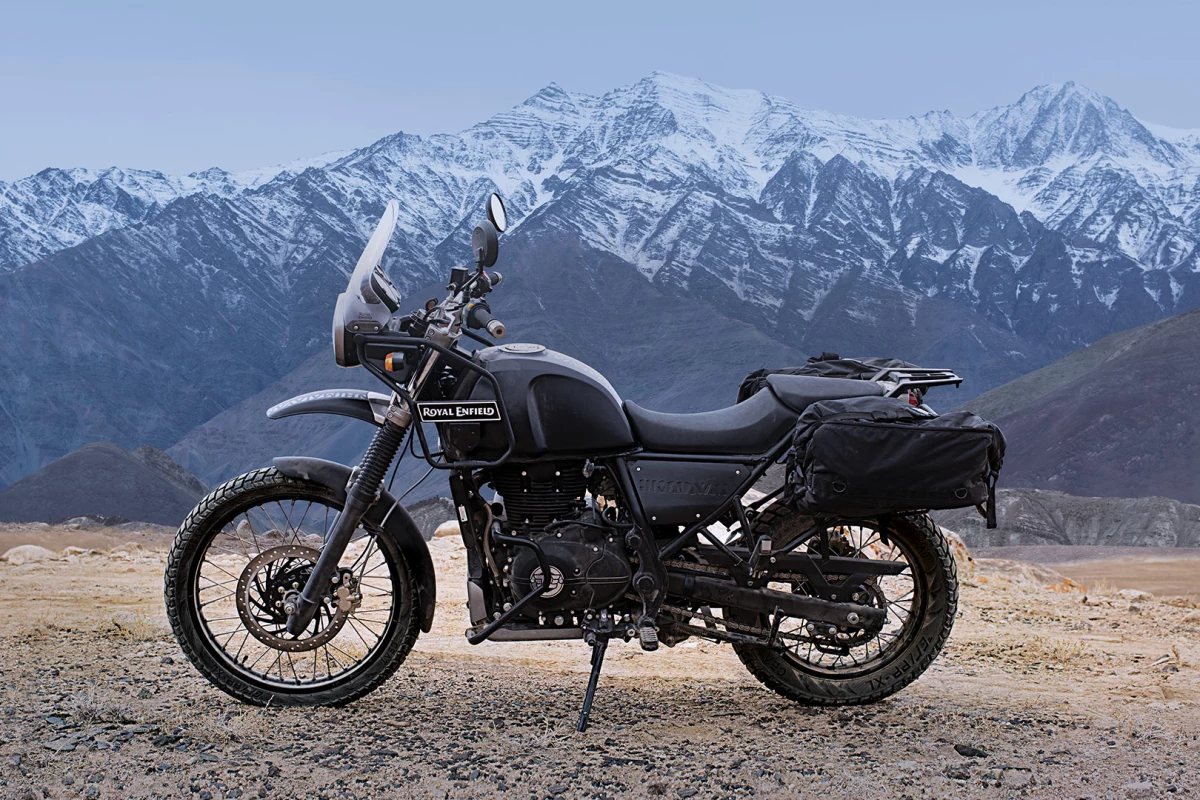For almost 60 years, Royal Enfield relied on a single-cylinder engine that draws its roots from the heyday of the British motorcycle industry. Now the Indian company has just revealed a brand-new engine designed in-house specifically for its first dual-purpose motorcycle, suitably named the Himalayan.
Taking on the Himalayas (or perhaps the vast emptiness of Mongolia) aboard a Royal Enfield Bullet is probably a prominent feature in most motorcyclists' bucket list. The iconic roadster was introduced in India in 1955, when the company extended its operations in the country that was then part of the British Empire. At the time, these motorcycles would be used to conduct army operations in remote areas, a feat that contributed significantly in building the adventurous myth of Royal Enfield.
Since then, the venerable single has gone through an extensive process of modernization, as the Chennai-based company manufactured it in 350, 500 and 535 cc versions – the latter introduced in 2014 with the Continental GT. Despite gradually benefiting from modern metallurgy and equipment like fuel injection and disk brakes though, the typical motor of Royal Enfield was still based on the very same design principles of the first batch of 350 cc singles that India had commissioned from England.
Enjoying unprecedented success in the last few years, Royal Enfield has seen its sales figures steadily gain almost 50 percent each year since 2010. Apparently the time was ripe for the next move, the introduction of a brand-new engine platform.

Officially called LS410, the new engine is once again a single-cylinder four stroke, named after the initials of Long Stroke and its cubic capacity. It is the first motor designed in-house by Royal Enfield, and its main concept is simplicity. The 411 cc cylinder with undersquare dimensions (78 x 86 mm) relies on a simple layout with a single overhead camshaft and two valves, is fed via a carburetor with throttle position sensor, and produces some 24.5 hp that are driven towards the rear wheel through a five-speed gearbox.
As Siddhartha Lal, CEO of Royal Enfield, explained during the launch of the new model on February 2, this engine has been specifically designed for a dual-purpose motorcycle, focusing on friendly handling, easy maintenance, simple repairs when venturing off the grid, and low consumption.
The LS410 makes its world debut in Royal Enfield's first adventure motorcycle, the Himalayan. Configured in the same logic as with the motor, it features the typical specs we'd expect to see in a typical 1990's Japanese dual-purpose bike. The frame is a steel semi-double cradle, while suspension tasks are taken care of by a pair of 41 mm conventional forks and a single rear shock (first ever for a Royal Enfield). Both suspensions enjoy relatively long travel, 200 mm (7.9 in) at the front, 180 mm (7.1 in) at the rear. The choice of wheels is also typical for off-road motorcycles, with a 90/90-21 front and a 120/90-17 rear.
Royal Enfield designed its adventure bike with touring equipment in mind, so the frame includes anchor points for side cases and their supports. Also, a couple of unusual metal bars at the front double as headlight brackets and supports for jerry cans.

The test riders' testimonials report an easy-handling motorcycle, after they reportedly put it through an exhausting testing cycle that included long journeys over every kind of terrain. With an announced kerb weight of 182 kg (401 lb) the Himalayan is not exactly lightweight. In theory 25 hp powering this mass doesn't sound very competitive, so weight distribution will be a key element in the equation. One feature that will definitely favor the Himalayan's friendliness is the torquey nature of the long stroke motor. With 32 Nm maxing out at just 4,000 rpm, it should be quite nifty at getting out of rough spots.
In terms of running costs, Royal Enfield discloses a very low fuel consumption figure, suggesting a range of 450 km (280 miles) with one full 15-litre (4-gallon) tank. That'd be 3.3 l per 100 km, or 70 mpg. Service intervals are also expected to be ample, as the press release teases us with oil changes every 10,000 km (6,214 miles).
The first Himalayans will reportedly arrive at Indian showrooms around April, at a price that is not expected to exceed INR200,000 (approx. US$3,000). Royal Enfield is reportedly planning to support the Himalayan with a more city-oriented version, probably translating to a rendition with less adventure equipment – such as jerry can brackets and engine bash plate.

Apparently, Royal Enfield wants to make sure that from now on a more suitable purpose-built machine will substitute the Bullet in the Himalayan adventures of our bucket list. Even if it never rolls its wheels on an exotic mountain range though, its gritty low and mid-range, plush suspension and low consumption should make for a very efficient commuter.
Once again it will all come down to weight balance. Given that the motorcycle's frame has been designed by Harris Performance – an English company with vast experience in frame design, acquired by Royal Enfield last May – we should have some guarantee that it'll be nicely balanced. If anything, the frame that Harris designed for the Continental GT proved to be indeed excellent.
The model's website (link below) is jammed full with all kinds of videos relating to every aspect of the Himalayan, from the evolution process to the full launch event. The following video is a short version of the new model's story.
Source: Royal Enfield












